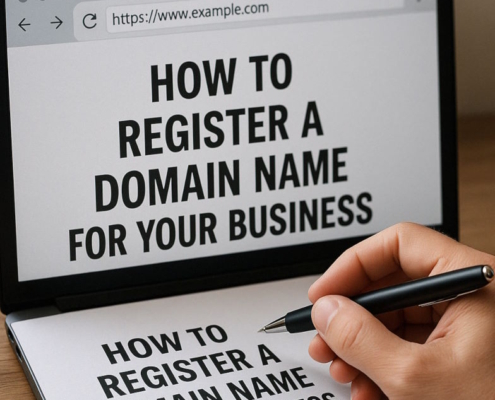A Basic Comparison of Variable Costs and Fixed Costs
Some examples of fixed costs include property tax, rent, insurance, and depreciation; these expenses do not change regardless of the amount of revenue a company makes. The term “variable costs” refers to expenditures like labor, utilities, commissions, and raw materials that might fluctuate depending on the number of units produced and sold.
The nature of a company’s operations is often unrelated to its fixed expenses. In a production curve, variable costs are greater for higher output and lower for lower output. It is critical for any company to know how variable expenses differ from fixed costs. Differentiating between fixed and variable expenses is essential for many business-related tasks, including monthly budgeting, product pricing, and major choices on the company’s profitability and spending structure.
Variable Costs
A company’s variable costs are those that change depending on the quantity of services or goods it produces. As output rises and falls, so do a company’s variable costs. The variable costs rise in proportion to the increase in production volume.
Variable costs, however, fall in tandem with volume. A business may decide to halt manufacturing of a product line if it finds that line to be underperforming or out of date. These expenditures are regarded to be avoidable costs since they are related to this product.
The following are some typical examples of variable costs:
- Commissions
- Labor
- Utility expenses
- Packaging
- Raw materials for manufacturing
The formula for determining variable costs is the amount of output multiplied by the variable cost per unit of production. Think about it: ABC Company makes ceramic cups and sells them for $2 each. The variable cost for the business will amount to $1,000 if it manufactures 500 units.
On the other hand, the corporation will not incur any variable expenses related to the production of the mugs if it does not manufacture any units. Similarly, the cost will increase to $2,000 if the firm produces 1,000 units.
Because variable costs vary between sectors, it would be highly misleading to compare the variable costs of two companies making completely different products, say, cars and appliances. Reason being, they don’t produce similar goods.
Make sure the organizations you pick are in the same industry if you want to compare their variable expenses.
Fixed Costs
No matter the volume of output, fixed expenses will always be there. Therefore, fixed costs are inevitable for every business. Therefore, unlike variable costs, which change as a function of output volume, fixed costs are indirect and do not directly relate to the manufacturing process.
The most typical types of fixed costs include rent or lease payments, property taxes, insurance, some wages, interest, and depreciation.
Let us return to the previous case to illustrate. Assume for the sake of argument that Company ABC’s mug production machine has a set monthly rental cost of $10,000. The $10,000 equipment rental fee is due even if the business doesn’t make a single cup that month.
But the fixed cost won’t change no matter how many mugs the company makes. Even if the company makes one million cups ($2 million in variable costs), the fixed costs remain the same.
Cost Accounting Methods: Fixed vs. Variable
To get a full view of your company’s financial well-being and profitability, you need to include both fixed and variable expenditures. Financial analysis, future budgeting, and decision-making about product pricing, spending structures, and growth plans may all benefit from a better grasp of fixed and variable costs.
Overhead expenses are another name for fixed costs because they don’t fluctuate based on production levels. You may easily keep tabs on these using standard accounting practices; just record them as costs and deduct them from gross income to get the net profit.
There are some expenses that will always be there for any small business owner, no matter how busy they are. Fixed costs are simpler to plan for financially since they tend to remain constant throughout the fiscal year. Since they have nothing to do with volume or operations, they are also harder to control than variable costs.
It is a bit trickier to keep tabs on variable expenses using accounting. Because they are proportional to output or sales, you must first determine the variable cost per unit, which is the sum of all the expenses (often related to direct labor and resources) that go into making one unit of your product. To find your overall variable expenditures for a specific time period, you multiply this per-unit cost by the total number of units you produce.
Variable expenses are more difficult to track and manage than fixed ones since they are subject to constant change and the amount you spend on them varies from one month to the next. They can have a dramatic impact on your profit margins, cause a precipitous drop in profits or a sudden surge in earnings for your company.
Particular Factors to Think About
Companies need to work harder to create and sell their products when they have higher fixed expenses because they need to earn more income to break even. That’s because these expenses are constant year-round.
A company’s fixed costs can have varying effects on its bottom line depending on the quantity of items it produces, in contrast to its variable costs, which generally stay constant. Therefore, fixed costs decrease as output rises. It is possible to spread the expense of a larger quantity of items over the same amount of fixed cost. By doing so, they might potentially increase output while decreasing expenses, a phenomenon known as economies of scale.
Take Company ABC as an example; they manufacture 1,000 mugs per month and pay $10,000 per month for the use of their production facilities. Because of this, it is possible that the fixed cost of the lease will be spread out at a rate of ten dollars each cup. The monthly production of 10,000 mugs reduces the fixed cost of the lease to $1 per mug.
Examples of Fixed and Variable Costs
Example 1: Fixed Costs
A company’s fixed costs are the outlays that it must make every year independent of fluctuations in revenue or output. These expenses typically occur on a regular basis, such rent or staff salary. Insurance premiums, loan payments, and phone and internet bills are some more examples of fixed costs.
Say, for instance, that your company pays $40,000 per month to rent a warehouse. This amount will remain constant regardless of the quantity of things sold. Since rent remains constant regardless of sales volume, it may be considered a fixed expense.
A fixed cost is one that is not subject to change regardless of changes in manufacturing output; this is not to say that the cost will never change. Your warehouse rent could go up or down, but it has nothing to do with how much you make or how much you sell.
Example 2: Variable Costs
The output of your production is exactly proportional to the change in variable costs. There would be no variable expenses for a time in which you produced no goods. Here are a few examples of typical variable costs:
- Direct materials
- Direct labor
- Transaction fees
- Commissions
- Utility usage fees
- Production equipment
In order to determine variable expenses, one must first determine the variable cost per unit, which includes all of the costs associated with producing one unit of a product, including labor and materials. To get the overall variable costs for making that product, you take the total cost per unit and multiply it by the quantity of units made.
Business Budgeting for Variable and Fixed Expenses
An effective company budget will account for both fixed and variable expenses. When a company is doing well financially, its leaders know how to divide up its fixed and variable costs such that they can cover both the constant overhead costs and the variable costs per unit of production.
The key to maximizing profits is mastering the art of cost management, namely variable and fixed expenses. If you want to maximize your profit per unit sold, your company should work to minimize its variable cost per unit without sacrificing quality. While there is no direct method to reduce fixed costs, economies of scale allow you to increase output while decreasing variable costs, so mitigating the influence of fixed costs on your bottom line.
Savings from Variable vs. Fixed Costs
It is usually not too difficult to manage variable costs. Purchasing more energy-efficient equipment, for instance, will reduce your power costs and, in the long run, pay for itself. You can save money by finding alternatives to more expensive materials or by doing the same work with less effort. Any one of these strategies can help you reduce variable expenses and boost your bottom line.
It is more difficult to control fixed overhead costs. A company will always have set overhead costs, even if you can, in theory, find a cheaper place to rent or reduce your phone plan to save money. Rather than letting fixed overhead expenses eat into your budget, you should look for strategies to enhance productivity while decreasing variable costs.
When planning for growth, it’s important to keep fixed costs in mind. For example, would it be worthwhile to invest in a larger, more costly warehouse if it meant your manufacturing output would increase by a certain percentage? In order to keep fixed and variable expenses under control and guarantee profitability for your organization, it is important to address problems like these.
What Makes Knowing the Difference Between Fixed and Variable Costs So Important?
Differentiating between fixed and variable costs is critical for entrepreneurs running small businesses. There are a lot of good reasons for this, including making better use of budgets, determining pricing, estimating the costs of tasks and orders, and planning for expansion.
Separating fixed and variable expenses also reveals other information, such as:
1. Analyzing the Break-Even Point
Finding a successful pricing point for your products or services requires an understanding of the distinction between fixed and variable expenditures. To do this, you need to know your fixed expenses in order to conduct the break-even analysis, which calculates the point at which your entire revenues are equal to your total costs. To get your break-even point, use the following formula:
Break-Even Point = Fixed Costs / (Revenue – Variable Costs)
If you change the variables in the equation, it may tell you not just how much something would cost, but also whether or not an expansion is feasible.
Potential buyers of a business might learn more about the company’s expected profitability through a break-even study. Using the equation, they may determine the amount of money and quantity of units required to turn a profit. They can then assess the accuracy and practicality of these figures.
2. Economies of Scale
One way to find economies of scale is to know your fixed and variable costs. This economic principle claims that a company may save money by increasing production because fixed expenses are spread out among more items in the output, which in turn reduces their total impact on the bottom line.
A company’s whole cost structure may be better understood with the help of both fixed and variable expenses. In order to make informed decisions on company expenses that directly affect profitability, it is crucial to understand the distinction between fixed costs and variable costs.
In summary
To manage your company efficiently and profitably, you must have a firm grasp of both your variable and fixed costs. Your capacity to develop and grow your company consistently over time depends on your knowledge of fixed and variable expenses, as well as how to handle each of them to maintain profitability.






























